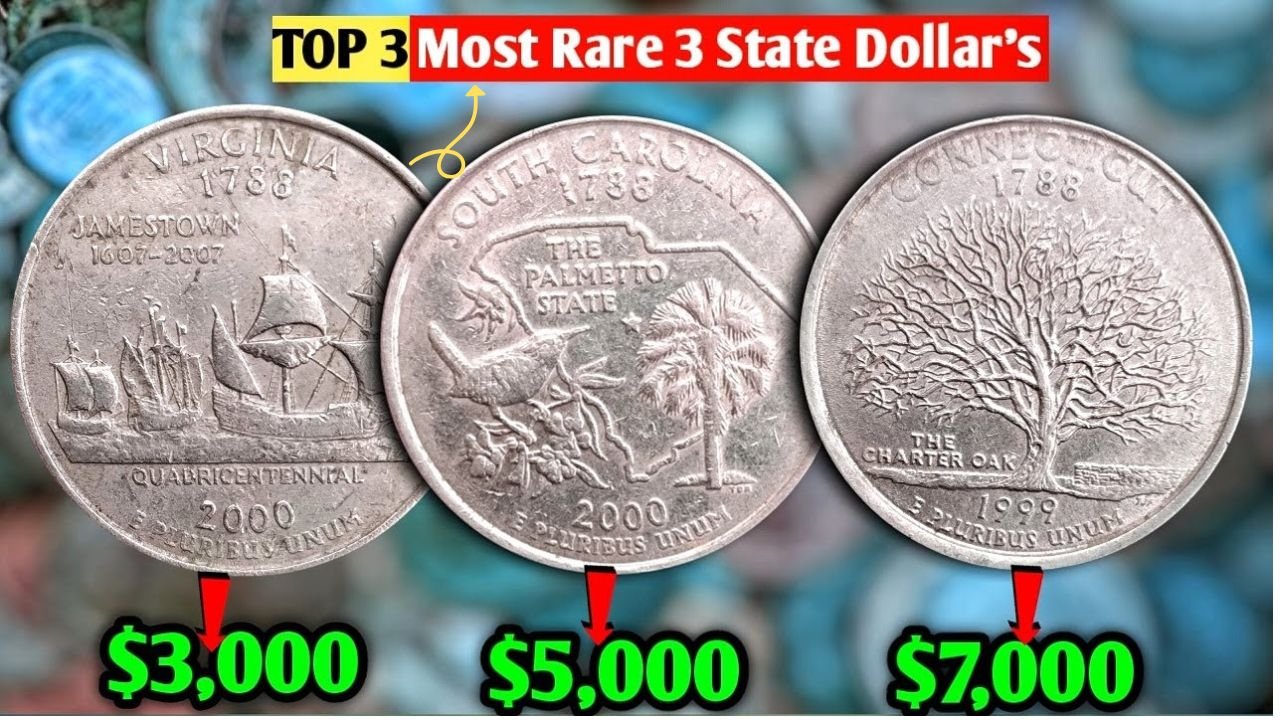3 Rare Bicentennial Quarters That Are Now Worth Millions to Collectors!
Most people don’t pay much attention to quarters—they’re just spare change used for vending machines or parking meters. But what if that old coin in your kitchen drawer is actually worth millions? It might sound far-fetched, but for coin collectors, rare Bicentennial quarters from 1976 have become some of the most prized coins in U.S. history.
The Bicentennial Quarter, released to celebrate 200 years of American independence, was made in huge numbers. But among the regular ones, there are a few rare types that are now worth a fortune. These special versions have either minting errors, unique metal compositions, or are in perfect condition, making them highly valuable.
Let’s explore the 3 rarest Bicentennial quarters that collectors are chasing—and what makes them so special.
What Is a Bicentennial Quarter?
In 1976, to celebrate the 200th anniversary of the United States, the U.S. Mint released special coins with unique designs. The quarter from that year featured the standard George Washington portrait on the front, but the back had a different image—a drummer boy with a torch surrounded by stars, representing the spirit of the Revolutionary War.
These coins also had the dual date “1776–1976”, setting them apart from all other quarters. While most were made from common materials and are still worth just 25 cents, a few extremely rare ones have made their way into the spotlight.
The 3 Rarest Bicentennial Quarters Worth Millions
1. 1976-S Silver Proof Bicentennial Quarter (Error Coin)
This is perhaps the most famous of the rare Bicentennial quarters. It was struck at the San Francisco Mint and made as part of a special proof set using 40% silver. These were not meant for regular circulation, which already makes them valuable.
But what makes this one a true standout is a minting error—some were double-stamped or misaligned during production. If you happen to have one of these in flawless condition, collectors may pay over $1 million, depending on the exact nature of the error and the condition of the coin.
2. 1976 Bicentennial Quarter Struck on a Silver Planchet (Wrong Metal)
Most Bicentennial quarters were made from a copper-nickel combination. However, a few were mistakenly struck on silver planchets (blanks meant for other coins). These are extremely rare and often discovered by chance.
The difference can be hard to spot at first glance, but collectors check the coin’s weight, edge color, and sound. These accidental silver-struck quarters have been sold in auctions for over $2 million, especially if they are in mint or near-mint condition.
3. 1976 No Mint Mark Bicentennial Quarter in MS-70 Condition
Coins with no mint mark are typically made in Philadelphia. While these are very common in general, finding one in MS-70 (perfect) condition is almost impossible. MS-70 means the coin has absolutely no marks, scratches, or signs of wear—even under magnification.
There are only a few known examples of Bicentennial quarters without a mint mark that are graded MS-70. These coins are considered flawless, and collectors are willing to pay big money—up to $3 million or more, depending on demand and rarity.
Overview Table: 3 Rare Bicentennial Quarters
| Coin Type | Unique Feature | Estimated Value | Rarity Level |
|---|---|---|---|
| 1976-S Silver Proof with Mint Error | Double-struck or off-center | $1 million+ | Very Rare |
| 1976 Quarter on Silver Planchet (No Mark) | Struck on silver instead of clad metal | $2 million+ | Extremely Rare |
| 1976 No Mint Mark in MS-70 Condition | Perfect uncirculated state | $3 million+ | Nearly One of a Kind |
Why Are These Quarters Worth So Much?
Coins become valuable not just because of age, but because of scarcity, condition, and demand. These rare Bicentennial quarters tick all the boxes:
-
Limited numbers: Most people never knew about these rare versions.
-
Perfect preservation: MS-70 graded coins are incredibly hard to find.
-
Minting mistakes: Errors are rare and exciting to collectors.
-
Historical importance: Celebrating 200 years of America adds emotional and cultural value.
When a collector sees a coin that combines all of these traits, the price can skyrocket into the millions.
Can You Still Find Them in Circulation?
You might be surprised, but yes—it’s possible, although extremely unlikely. Some of these rare coins were mistakenly released into circulation or ended up in jars, drawers, and collections without anyone knowing their true value.
That’s why coin collectors still go through rolls of quarters from banks, old boxes, or inherited collections. It’s like treasure hunting—because sometimes, you really do find gold.
How to Check If You Have a Rare Bicentennial Quarter
If you’ve got a stash of old coins or just want to double-check your pocket change, here are some things to look for:
-
Check the Date – It should read 1776–1976 on the front.
-
Look at the Edge – A silver edge (without a copper stripe) could mean it’s a silver planchet.
-
Weigh the Coin – A standard clad quarter weighs about 5.67 grams. A silver one weighs a little more.
-
Inspect for Errors – Double stamping, off-center images, or missing details are all worth noting.
-
Condition is Key – Even a rare coin loses value if it’s badly worn.
If you suspect you have something special, don’t clean the coin—just take it to a professional coin dealer or send it to a coin grading service like PCGS or NGC.
Frequently Asked Questions (FAQs)
1. Are all Bicentennial quarters valuable?
No, most of them are only worth face value. Only the rare ones with errors, silver content, or perfect condition are valuable to collectors.
2. How do I know if my quarter is silver?
Look at the edge—if there’s no copper strip and the coin feels heavier, it might be silver. Weighing it with a small digital scale can also help.
3. What does “MS-70” mean?
MS-70 is a coin grading term that means Mint State 70, or perfect condition. No scratches, no wear—flawless under magnification.
4. Where can I sell a rare Bicentennial quarter?
You can sell it at a coin auction, through a certified dealer, or online on platforms like eBay or Heritage Auctions—but always get it professionally graded first.
5. Should I keep or sell a rare coin?
That depends on your goals. If you’re emotionally attached or think the value may rise, hold onto it. But if you need cash and the market is hot, it might be time to sell.
Final Thoughts
The story of the rare Bicentennial quarters is a reminder that history can be hiding in plain sight. These tiny coins, created to honor America’s 200th birthday, have now become treasures for collectors around the world. While the odds of finding a million-dollar coin are slim, they’re not zero—and that makes checking your change a little more exciting.
So the next time you find a 1976 quarter, don’t dismiss it. Give it a closer look. You never know—it could be worth millions.



